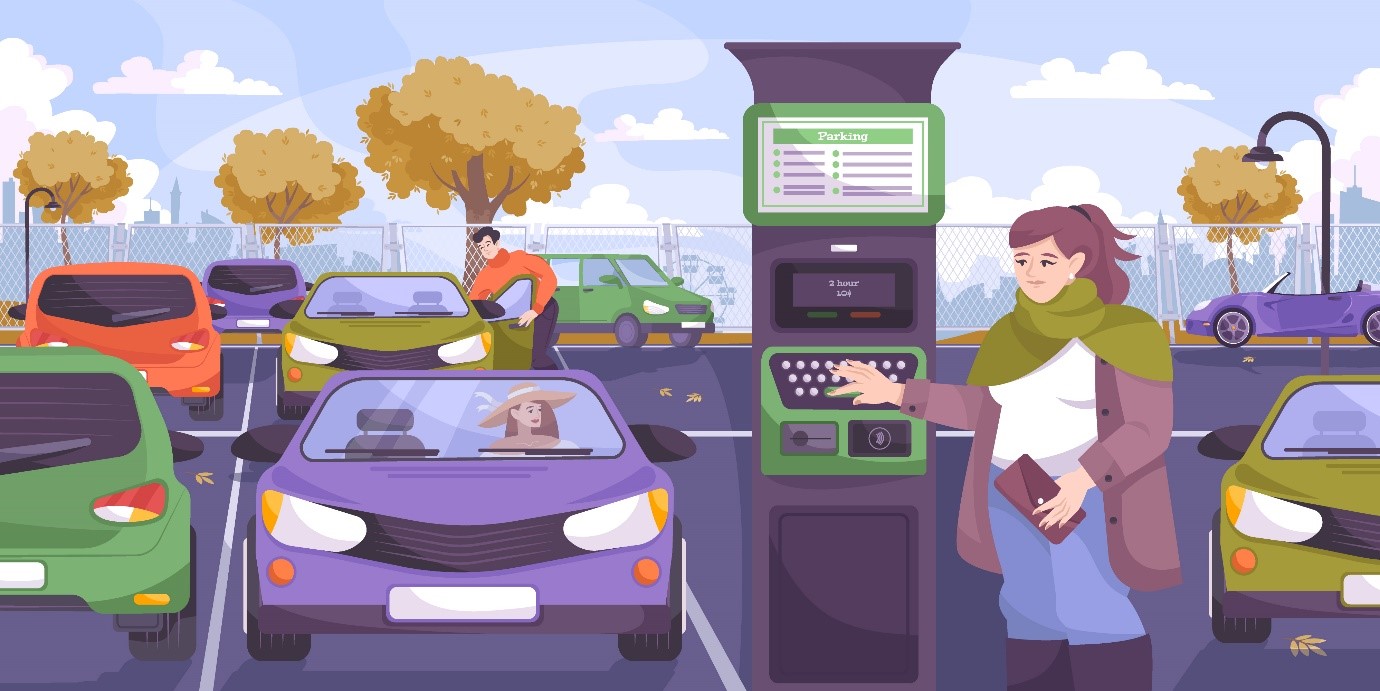The proliferation of MRTS (mass rapid transportation systems), such as bus rapid transit systems, metro rails, and light rails, have ended in unprecedented passenger volumes. Moreover, this evolving business scenario has created the need for next-generation, intelligent, automated fare collection (AFC) systems.
What Is an Automated Fare Collection System?
An automated fare collection (AFC) system is the pool of collected elements to automate the ticketing system in the public transport network. AFC system has two elements such as software and hardware. It is designed with the notion of a secure and reliable payment system.
AFC (Automated fare collection) has become one of the essential things in the stations and bus stops in numerous metropolitan or smart cities. This secure system consists of a ticket checking machine, automatic gate machine, and ticket vending machine, which are leveraged by IC chip-equipped contactless smart cards. It makes fare collection more precise and safer. The ticketing system can be a Contactless smart card or token type.
Importance of an Automated Fare Collection System
In many developed and developing countries, there is rapid and mass transit of many passengers, and to handle such mass, efficient and proper fare collection plays a significant role. Manual fare collection systems demand a lot of staff, and it is becoming time-consuming and might cause more traffic, resulting in the discomfort of the patients in a hurry to reach their destination. To make it easy, a hassle-free automated ticket collection system has been introduced.
Ticket Office Machine (TOM), Ticket Vending Machine (TVM), fare gates, and IC cards are the kind of machines needed in the automated fare collection system. It is commonly used in railways and transportation services, parking and cinema halls, and entertainment.
Benefits of an Automated Fare Collection System
Effective AFC systems have been widely accepted worldwide for the Metro environment since they offer several benefits over manual collection systems. It requires less staff, less leakage of revenue, and fraud can be avoided.
Automatic fare collection is secure and efficient to operate. The passenger or the user can easily generate tickets for their destination journey on their own. By applying the AFC, the system is stable and integrated platforms can keep the flow of passengers run smoothly at peak hours. A reliable AFC system guarantees Fast transactions with a contactless smart card that lowers the boarding time.
Electronic ticketing decreases the chances of theft as that occurs in physical currency. Since the system is automated, it reduces the cost of revenue collection compared to paper-based ticketing. The smart cards or tokens are reusable. Therefore, it reduces printing, handling, and distributing paper tickets.
In the AFC system, passengers’ entry and exit are automatically recorded at fare gates. If implemented in a city, all these advantages of the AFC system improve the city’s image and increase the convenience of transportation, making life better and easy for people dwelling at that place.
Trends in AFC
The automated fare collection system includes optical character recognition (OCR), magnetic strip, near field communication (NFC), and smart cards. Advancements in these technologies have been made to improve their performances.
- Smart card
- The contactless card payment technology is accelerating globally due to its numerous advantages. Smart cards are being used at the terminals of the AFC system where the cards are accessed, and the information is sent to the destination by the servers accordingly, and the amount gets deducted from the card. These cards are recharged as top-ups.
- A card-based fare collection is a sort of closed-loop solution system. Moreover, contactless debit and credit cards can be an option in the following days when this idea will cross the barrier of security issues.
- Near Field Communications (NFC)
- NFC operates on radio frequency identification (RFID) based technology which allows communication distance to four inches or less. It utilizes unpowered chips on the cards that communicate with the onboard in the fare collection system. In contrast to this, smart cards need to be inserted into the machine. NFC is relatively easier to use than smart cards.
- Optical Character Recognition (OCR)
- In OCR, images of handwritten or typed letters are electronically converted into machine-encoded text. It is an advanced technology. It generally involves matrix matching. It is discovering its applications in multiple fields, including fare collection systems.
Deck IT’s Automated Fare Collection System
Deck IT’s AFC system accommodates traditional closed-loop fare collection function utilizing contactless smartcards built with proprietary products and integrates very well with any open-loop middleware.
The Deck IT’s APIs make the platform extensible, allowing integration with other ticketing modules such as QR Code servers and specialized third-party systems. Moreover, the use of open APIs in the TruFare platform ensures that it is open to integration with new third-party solutions, which might be required for business-specific purposes.
The efficient automatic system helps cut down resource costs and increases profitability leading to a cost-efficient and improved riding experience for the users. These solutions can be customized to include the entire scope of public transportation and recreation services where fares are being collected.
Get in touch with the experts at Deck IT if you’re looking for an AFC system that offers better ROI with reduced wastage translating into an increased profit margin.




